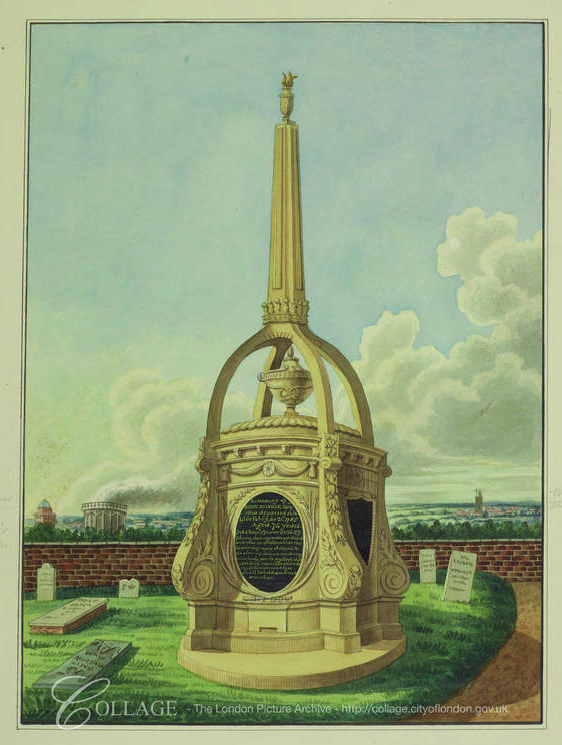Hard to imagine this part of the East End being a queer sanctuary and a once idyllic rural retreat…
I recently gave a walking tour around old Bromley-By-Bow on behalf of my good friends at Tower Hamlets Cemetery Park and the Women’s Environmentalist Network.
It’s an area I’m vaguely familiar with, as my old local Toby Carvery had a picture of the ruined churchyard of its church, Bromley St Leonard’s, up on the wall. A delightful part of E20 on the wall of a building in BR2. I’d long wanted to go to this other Bromley personally but never had the chance to – until now.
The brief was to write a tour focussing on the long-demolished church and its environs; I rolled my sleeves up and got to work. Here are a selection of things that tantalised me!
The Two Bromleys
Firsly, as I researched the area, there was a lot of confusion between Bromley (the London Borough of) and Bromley (By Bow) in the various archives and records that I delved into. It would seem that my Bromley came first, appearing in 862 AD (or CE if you’re new fangled) whereas Bromley By Bow appeared in the 1160’s, as a result of a Monastery which was built in the area.
Things further got complicated when all the boroughs were squished and squeezed into each other as a result of the London Government Act of 1963 – sweeping away the Metropolitan Boroughs, consigning the likes of the Boroughs of Poplar to the historical bin. Bromley was renamed ‘Bromley By Bow’, to differentiate it from the one dahn saff.
Presumably ‘Bromley by Croydon’ was unpalatable to the denziens of South London.
Queen James

One of the remarkable things I found out was the legacy of James I and the ramifications of the bulldozing of his former hunting Lodge. According to Dan Vo, the Old Palace – which is now the site of a Primary School which shares its name – was a hunting Lodge which was ideally placed on the Essex border.
The lodge was a beautiful red brick Jacobean number with twenty four state rooms: it was the epicentre of a lads-only scottish colony created by James himself. Now, in recent years his sexuality has come in to question. One does wonder how much hunting actually got done here; the cat being away and all that.
It’s also fascinating to see the queer history trickle down the ages and see another historical gay of note, C R Ashbee and his involvement in protecting London’s heritage. The Old Palace was scheduled to be demolished for a new building by the London School Board; Ashbee’s view was why not use the existing building and save a key part of London’s history – sadly, like most of the Victorian times, the needs of the here and now won over the needs of the long gone and it was flattened.
A little relic remains though; the state room was deonstructed and rebuilt and is now available to visit as Room 58 in the Victoria and Albert Museum. This urged Ashbee to found the Survey of London, which is still in print today and threw the spotlight on building preservation and conservation in a way that had never been considered before.
Gandhi Woz Ere

Kingsley Hall stands like a magnificently forlorn cinema in the middle of terraced housing, council blocks and a small park. Founded by sisters Muriel and Doris Lester in honour of their brother who died too young; their middle-class upbringing in Leytonstone instilled in them the need to help those less fortunate than themselves and so, with his estate, set up an institute that delivered care to the community.
In 1931 Gandhi was due to come to London to take part in the second of the Round Table conferences which was iamed at redressing the balance of power between India and Great Britain. Muriel instsantly invited Gandhi to stay at Kingsley Hall as she recognised he’d be more at home amongst the poor of the East End than amongst the more afluent members of society in West London; he gladly accepted.
British Pathe created this film about his impending visit.
He stayed for 12 weeks and would never return to the UK; the conference (and its third and final iteration a few months later) were largely a waste of time and he was assassinated in 1948. Muriel would later be nominated for two Nobel Prizes.
The Lost Churchyard?
Once the setting of every baptism, wedding and funeral in the parish, its history is now lost amongst brambles, eroded headstones and decay. Weird to think this site was mentioned by Chaucer in a veiled attack at the Frech-speaking Nun Prioress. The Priory gave way to the Church and it was largely rebuilt in 1842.

There’s a sadness here – not because of the unmarked dead who surrounded me, but because at one time this churchyard would have been the nucleus of the surrounding village. Glimpses of its time when scarlet dyers and calico printers worked locally and men such as Sir Edmund Hay Currie, a giant of the East End philanthropists (a businessman and distiller, he extensively helped the poor of he East End – from fundraising £150,000 for the London hospital, helping establish the People’s Palace (which is now part of Queen Mary University of London) and setting up a makeshift smallpox hospital for the afflicted neighbourhood on a hillside in Kent.
But we do have records from various sources; London Collage has a number of engravings of monuments that used to stand in this unevern ground.

Nearby too is an old Almshouse overshadowed by a huge tower block and other little vestiges of a village who surrendered to the inevitable march of urbanisation.


One response to “The Lost Village of the East End”
[…] 9. The Lost Village of the East End […]